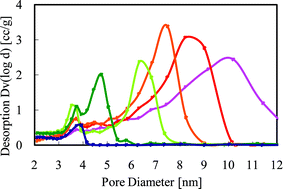Fabrication of boehmite films with cage-like pores and their properties as enzyme immobilization supports
Abstract
The texture of porous films prepared from boehmite

* Corresponding authors
a
National Institute of Advanced Industrial Science and Technology, Ibaraki, Japan
E-mail:
f-mizukami@aist.go.jp
Fax: +81-29-861-4634
Tel: +81-29-861-4634
b
Kawaken Fine Chemicals Co., Ltd., Tokyo, Japan
Fax: +81-3-3663-9525
Tel: +81-3-3661-5630
The texture of porous films prepared from boehmite

 Please wait while we load your content...
Something went wrong. Try again?
Please wait while we load your content...
Something went wrong. Try again?
N. Nagai, Y. Suzuki, C. Sekikawa, T. Y. Nara, Y. Hakuta, T. Tsunoda and F. Mizukami, J. Mater. Chem., 2012, 22, 3234 DOI: 10.1039/C2JM15704G
To request permission to reproduce material from this article, please go to the Copyright Clearance Center request page.
If you are an author contributing to an RSC publication, you do not need to request permission provided correct acknowledgement is given.
If you are the author of this article, you do not need to request permission to reproduce figures and diagrams provided correct acknowledgement is given. If you want to reproduce the whole article in a third-party publication (excluding your thesis/dissertation for which permission is not required) please go to the Copyright Clearance Center request page.
Read more about how to correctly acknowledge RSC content.
 Fetching data from CrossRef.
Fetching data from CrossRef.
This may take some time to load.
Loading related content
